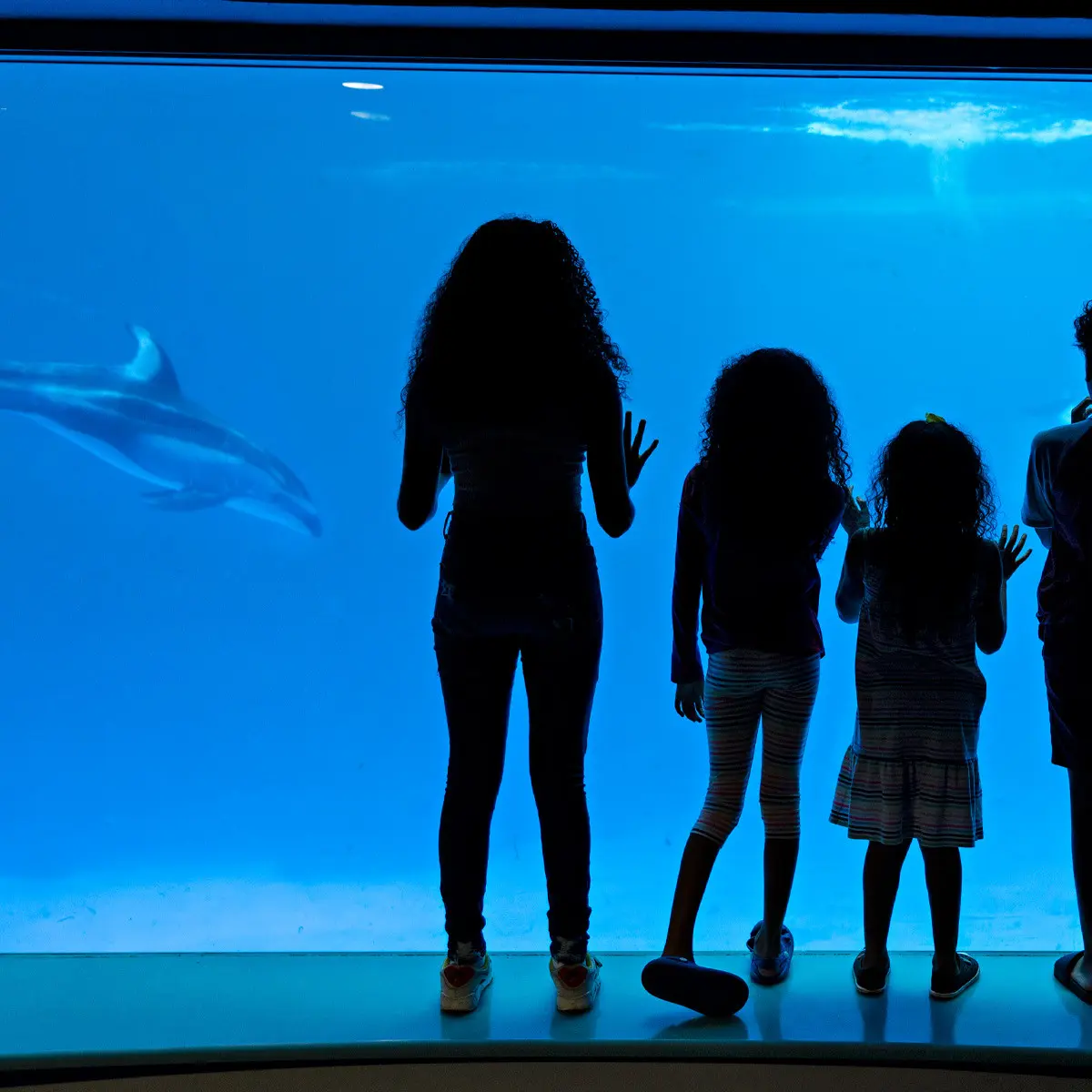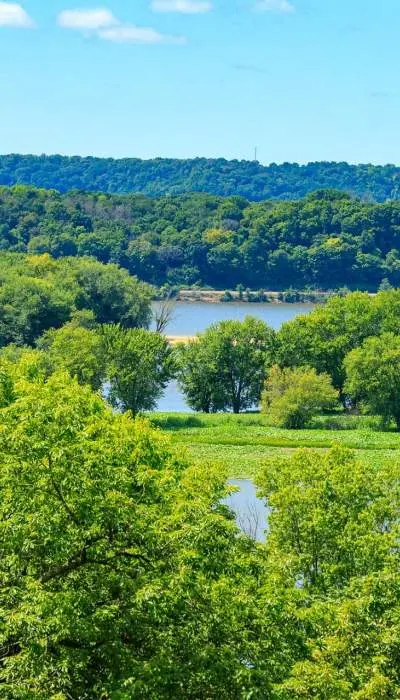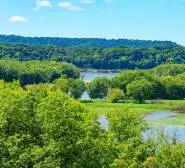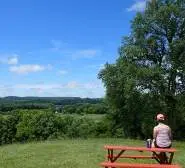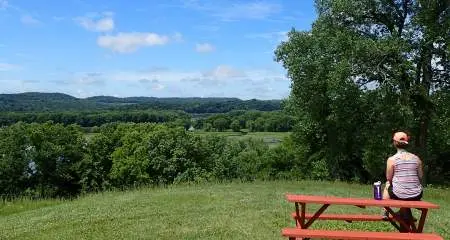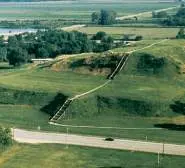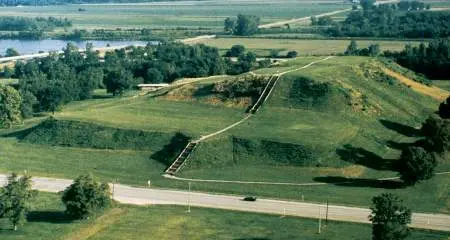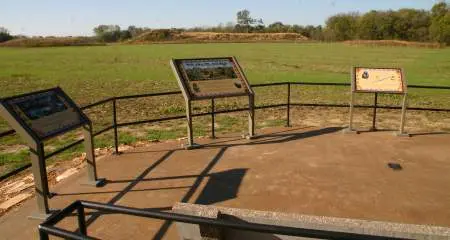Day 1:
From Galena to Peoria
The journey begins in Galena. It's known for its more recent historic charm, but the scenic bluffs that surround it hold secrets much older than that. Start at Casper Bluff Land and Water Reserve, where walking trails with striking panoramic views allow you to see the remains of ancient Native American mounds perched above the Mississippi River.
Next, you'll head south to Albany Mounds State Historic Site. Across 205 acres of riverside prairie, you'll find more than 90 burial and ceremonial mounds that have been here for over 2,000 years. As the site's newest visitor, think about the long history that stretches back from where you now stand across countless generations.
That's not the end of your archaeological discoveries for the day. In the afternoon, continue on to Dickson Mounds Museum in Lewistown, situated at one of the most significant Native American archaeological sites in Illinois. The museum takes you into the daily lives of the Mississippian people who lived along the Illinois River through displays of tools, pottery, and artifacts.
Your first day ends in Peoria, at the Peoria Riverfront Museum. It's another chance to see Native American artifacts that highlight the artistry and craftsmanship of Illinois' first peoples. Afterward, enjoy a stroll along the Peoria riverfront, reflecting on the day as the sun sets over the Illinois River, as it has for countless generations

